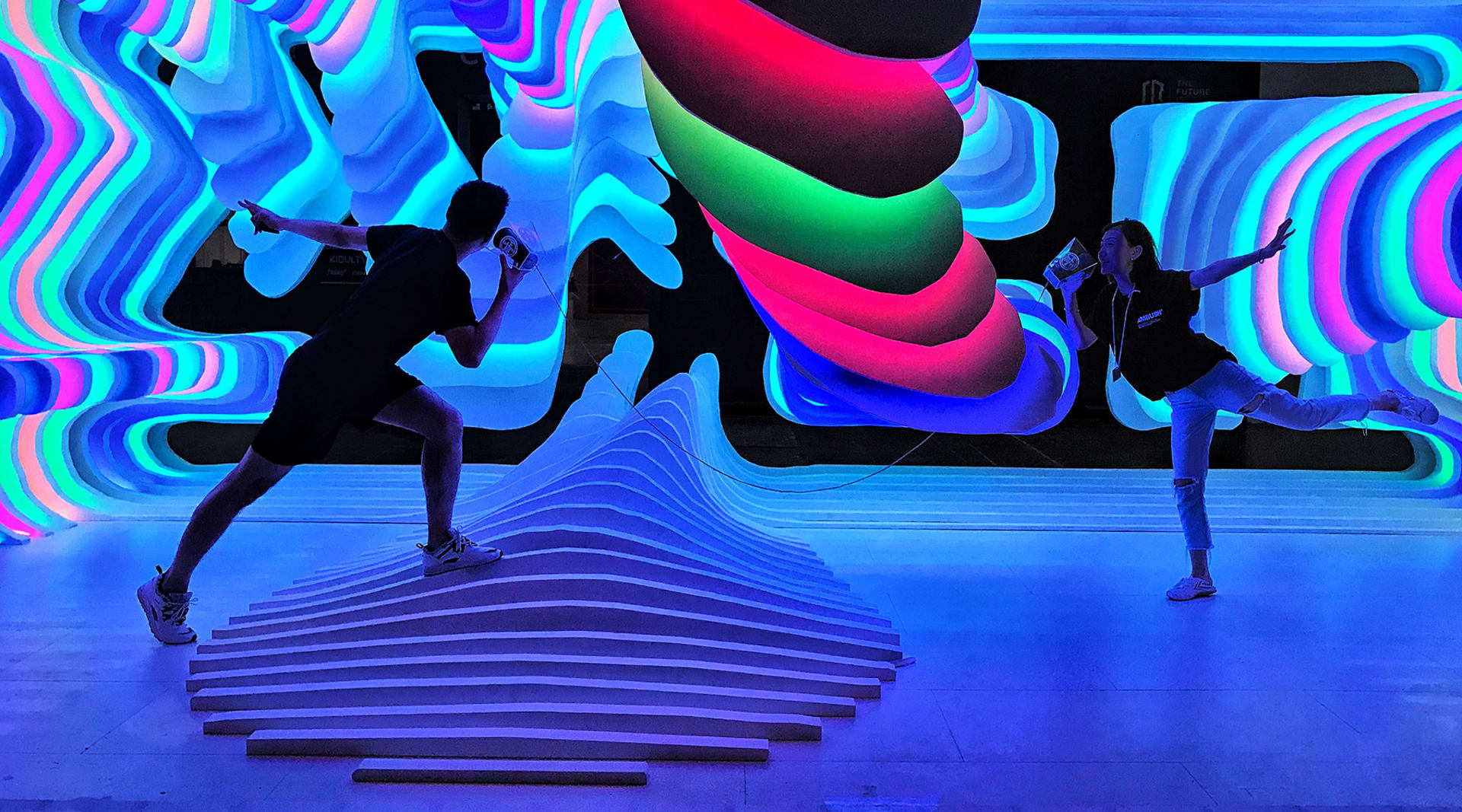The ball and balloon pits, the one-liner neon signs, and the millennial-pink backdrops that have become all too familiar in Instagrammable pop-up circles throughout the United States are spreading like wildfire in China, across the cafés, gyms, shops, and gallery spaces of opportunists hoping to attract selfie-loving internet celebrities. But a Beijing entrepreneur hopes his debut exhibition, The Legit Dumpling House, with larger-than-life bedazzled dumpling as its centerpiece, will stand out from the rest.
Chinese creatives are bringing the "Instagram Experience" to Weibo and WeChat, with their own cultural spin and motivations.
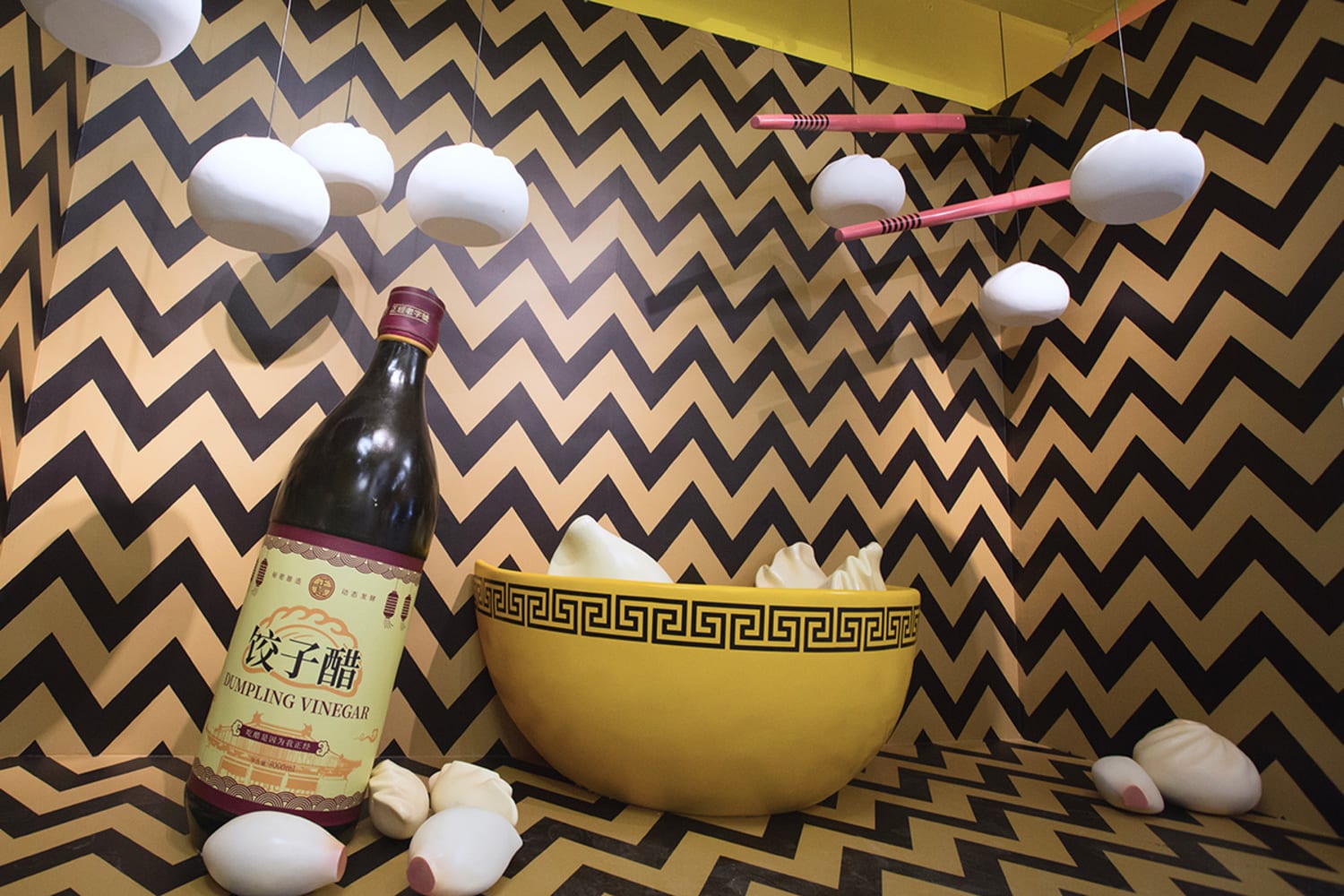
Tim Zheng, founder and CEO of the 正经做梦DREAMER creative company, launched The Legit Dumpling House last month, on the second floor of a Beijing shopping mall popular for its photogenic restaurants. The multiroom exhibition doesn’t serve meals, but has much of the token millennial-focused appeal of pop-ups such as The Egg House in Shanghai or Room for Tea in New York. The space, which was designed with the help of chief creative director and co-founder Wang Yimeng, is made to look just as great in photos as in person, and engage all of the senses.
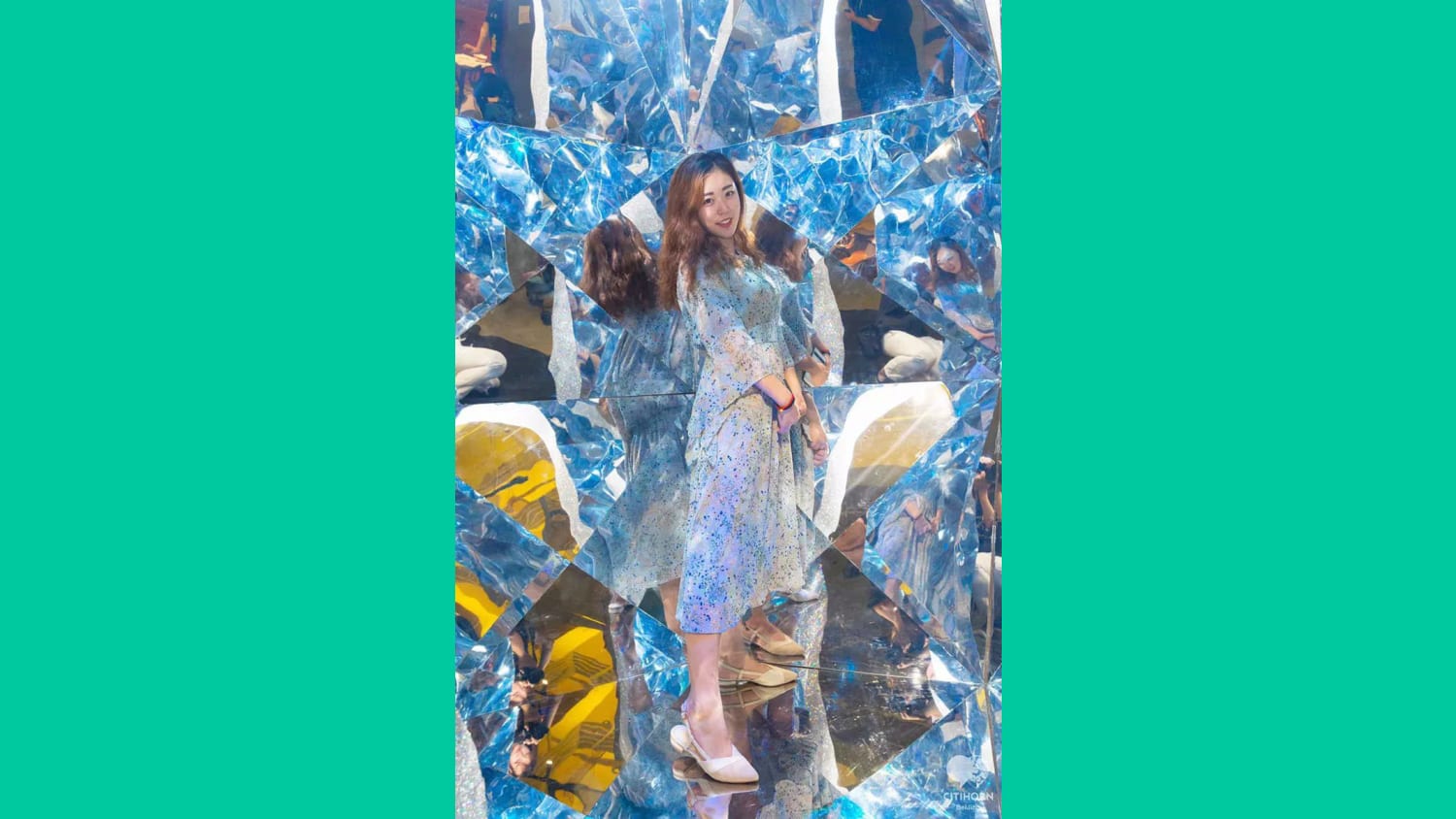

“To be honest, it took us about two seconds to come up with the concept,” Zheng tells JWT Intelligence. “We wanted to pick a theme that has a lot of cultural connections for northerners. Dumplings have been around for about 2,000 years, and the institution of the dumpling house has been around for the same time, but as time goes on, a lot of millennials don’t really make dumplings with their families during Chinese New Year. Dumpling stuffings have different cultural contexts, from giving birth to having a happy marriage to family unity. A lot goes into it, but, because of how it’s being presented these days, millennials don’t want to learn about it. So that’s how it started.”
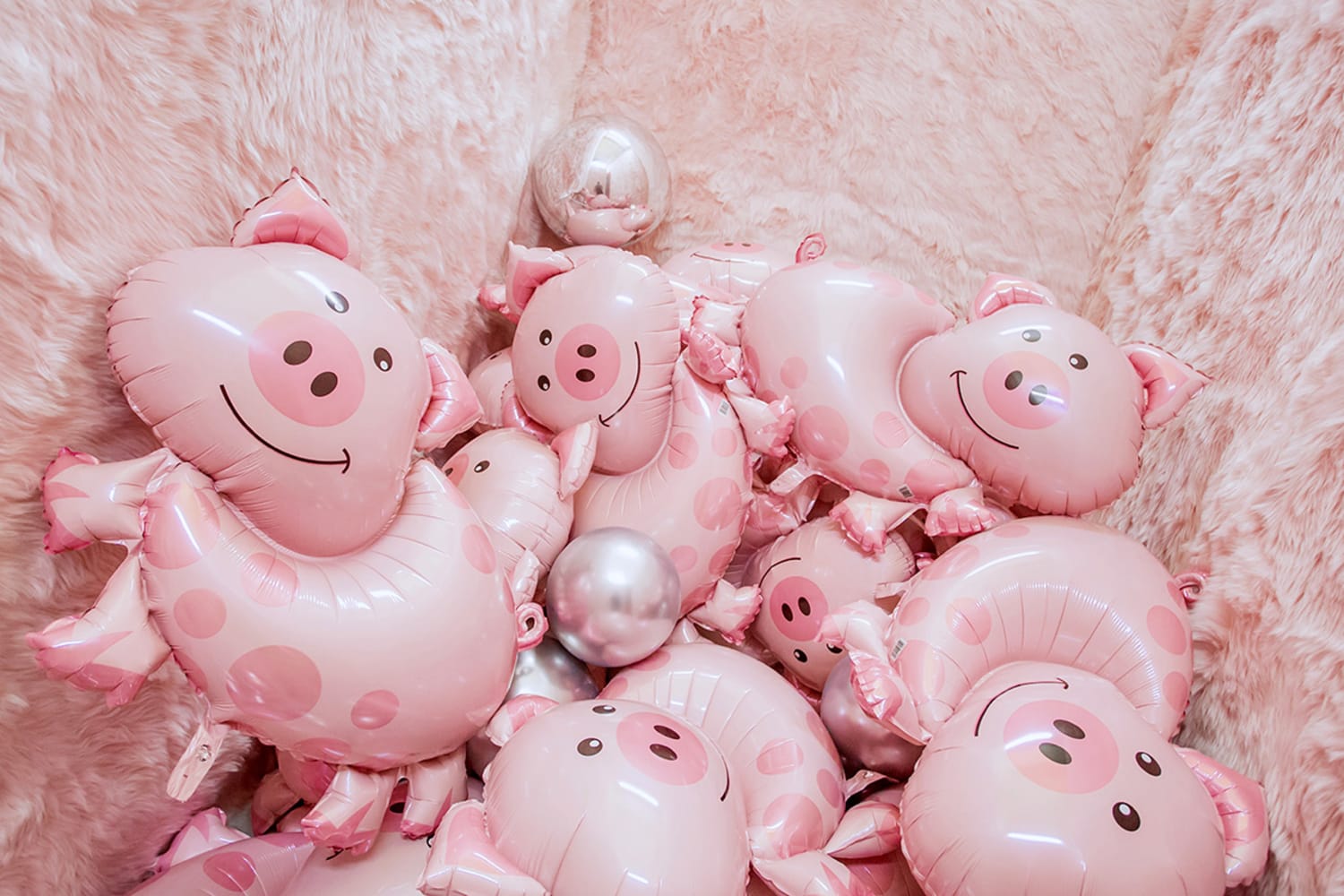
A more millennial-friendly, approachable connection to culture isn’t the only motivation for the space itself, which Zheng says came about after he ran into an obstacle in his previous venture. He had been working with high-profile architects and designers to incorporate Chinese contemporary art into their projects to target affluent consumers in China. But there was a problem: these consumers just weren’t getting it.
“I realized a huge problem in the Chinese art market, or the greater cultural market, was that people tend to have a very, very low understanding and appreciation of fine art, or even of the art field at all,” he says. “In most Western countries, art and culture play a fundamental role in the entire society.”
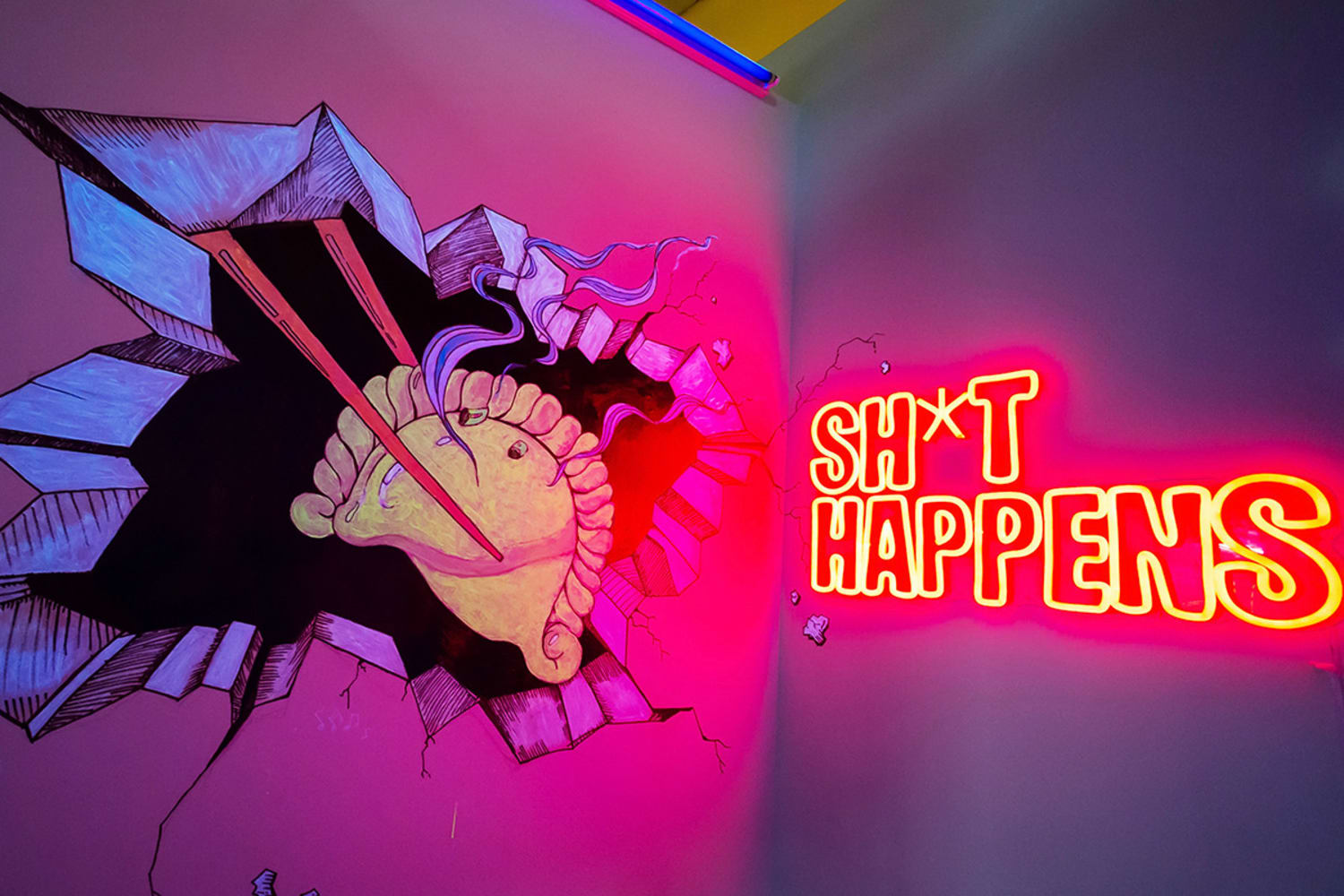
In China, where fine art isn’t typically part of a school curriculum, art collectors and curators have been working with mall developers and brands for a number of years to create crossover opportunities among Chinese audiences, fueling interest and building a culture around art. Zheng’s approach is to focus on making his visitors the protagonists in his exhibitions to help them “accept art as an element in their lives.”
“I was thinking, is it possible to create something that everyone can be a part of, where consumers were wanting to come and wanting to share on social media?” he says.

China’s more traditional art museums and fine art communities are also pondering similar issues to the ones Zheng faced earlier in his career. Leigh Tanner, an independent curator and Museum 2050 founder, says that participants at Museum 2050’s inaugural conference in June addressed the issue of “if and how museums should cater to the demands of social media.”
“Audience development is a big challenge in China as there is not the tradition of museum or exhibition-attending that exists in a European or American context,” she explains. “It’s all quite new and, for better or for worse, an exhibition’s Instagrammability impacts foot traffic. As many of the contemporary art institutions in China are quite young—generally less than 15 years old—social media channels matter for outreach and exposure.”

Tanner emphasizes the importance of social media to Chinese millennial and generation Z consumers. “I think visually appealing content resonates with all audiences,” she says. “However, much of life is lived on your phone here in China and, as a result, creating and consuming digitally based content is fully integrated into daily routine and a constant endeavor.”
Many of the art pop-ups in China and the United States are attracting skepticism for relying too heavily on Instagrammable elements, but Zheng’s cultural products have already taken on a completely different form at Shanghai’s streetwear convention, Yo’Hood, which this year ran from August 31 to September 2. He describes his latest installation, Urban Cave, as a “social experiment,” where visitors to the rainbow-colored, psychedelic cavern can FaceTime with strangers using an iPhone set up in the center of the space. It has already attracted A-list Chinese Weibo and WeChat stars and fashion bloggers to pose for pictures, and, Zheng hopes, ponder it on a deeper level.


The正经做梦DREAMER team’s dumpling exhibition is set to travel around China, with plans to take it to Los Angeles by the end of the year. Zheng also has plans for other immersive concepts, including a “zoo” and a “maze,” that he hopes will get people talking and interacting. He hopes that his exhibitions will “open the door for viewers to the possibilities of art and to start accepting art and go to museums—even traditional ones—more often.”
Please provide your contact information to continue.
Related Content

For Arriana Yiallourides “It’s No Longer About Selling Ideas, It’s About Creating Them Together”

